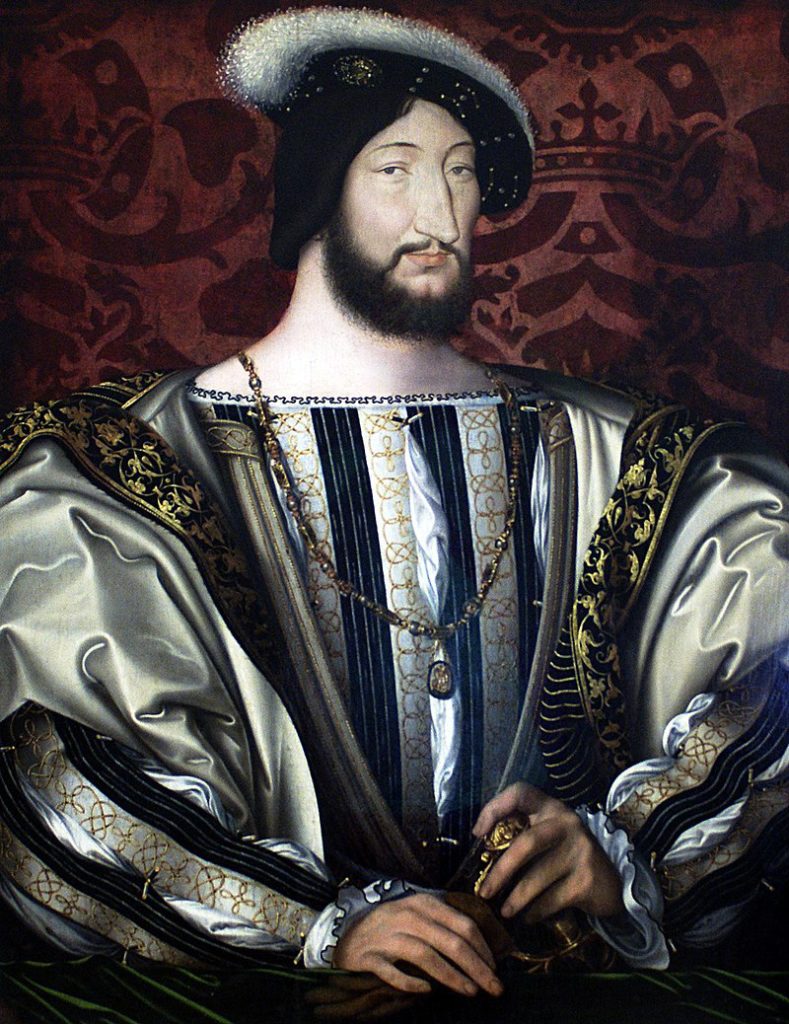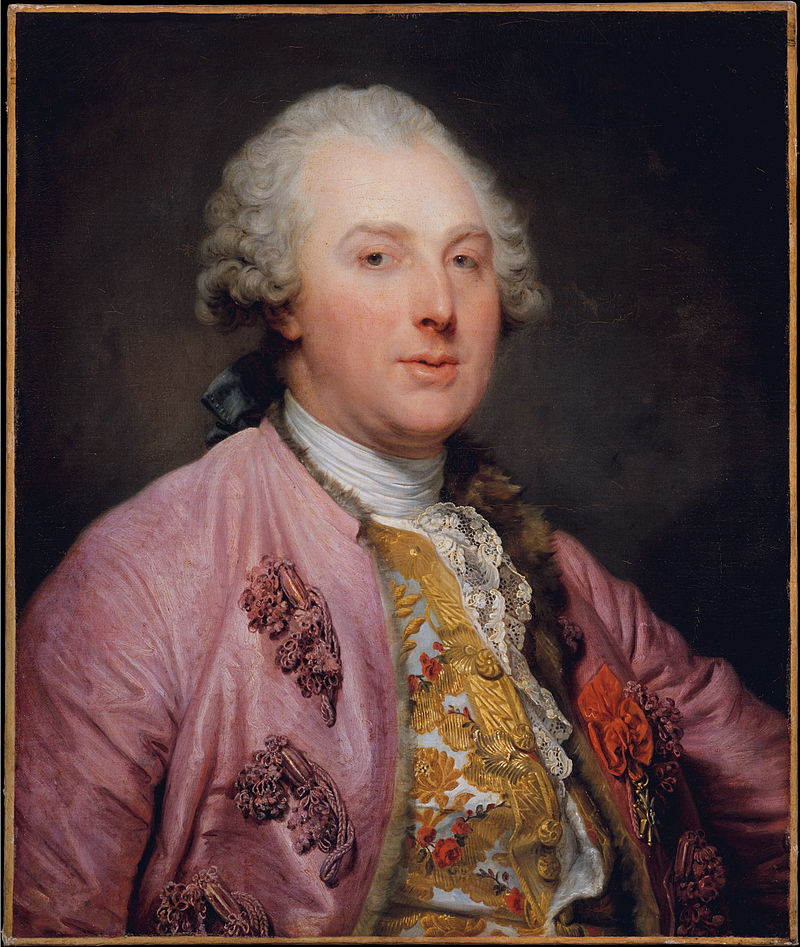Chateau Louvre.
At the close of the previous post, Louis IX had begun the transformation of the Louvre from a fortress to a royal residence but it proved to be a particularly gradual transformation. Louis IX, the only French king to be venerated by the Catholic Church, died in August 1270. Six kings in the House of Capet and the first two kings from the House of Valois would rule France until, under the reign of Charles V, the Louvre truly began its transformation from fortress to residence. (The first peace of the Hundred Years War began in 1360 so by the time of his coronation in 1364 Charles V had both the time and the treasure to begin this project.) He charged his architect Raymond du Temple with the task of converting the fortress into an up-to-date dwelling. Opening more windows in the walls and enhancing the upper sections with high ornate roofs were among the most noticeable of du Temple’s changes.
But there was still lots of fighting left in the Hundred Years War and during this time the Louvre remained relatively unchanged. After France had a brief ascendancy under Charles V, the English fought back and occupied Paris for 15 years beginning in 1420 near the end of the reign of Charles VI. The Battle of Castillon on 17 July 1453 is generally considered the last battle of the that war which ended more with a whimper than a bang as England’s attention turned inward because of the tension that would erupt as the Wars of the Roses that began in 1455.
Decades of relative calm in the north, led to the Louvre seeing its greatest changes. These came during the reign of Francois I.
(From Wikipedia.)
Francois had his coronation in 1515 but for purposes of this narrative I’ll skip ahead to his return to Paris in 1526 after his release from Pavia where he’d spent a bit more than a year as a prisoner of war (during what is known as the Four Years War). In 1528, he issued a formal declaration of his intent to make the Louvre his main residence in Paris. Feeling he had outgrown the Palais de la Cité, which now served multiple purposes, Francois began to raze and reconstruct the old Louvre fortress and replace it with a Renaissance palace.
(Francois is considered the king who initiated the French Renaissance and he is probably best described as a prodigious patron of the arts. In addition to beginning the reformation of the Louvre, Francois also constructed the Château de Chambord where he convinced Leonardo da Vinci to spend his final years. Though da Vinci didn’t paint much during those years he did bring with him a small painting the French call La Jaconde and that we know as the Mona Lisa.
He also promoted the development of a standardized French language. These efforts earned him the moniker le Père et Restaurateur des Lettres [the Father and Restorer of Letters].)
While much of the main work of reconstruction occurred under Henri II, the plans were developed under Francois. The project began with rebuilding the west wing, which would house a grand ballroom and the ceremonial staircase leading to the royal apartments. The architect was Pierre Lescot who oversaw all of the work and wanted to integrate classical forms such as Corinthian columns with a façade that incorporated contemporary design elements such as large windows and high roofs.
The Lescot Wing (Aile Lescot).
is the oldest section of the building still standing. (Here’s where you can see other photos from our morning walk.)
In my post on the Place des Vosges, I noted that Henri II died in a joust on the grounds of the Hôtel des Tournelles and that his wife, Catherine de Médici ordered that building’s destruction. She moved back into the Palais du Louvre but also ordered work begun on the Tuilleries Palace to which she would eventually move. The two palaces were connected by the Grande Galerie in a project that began in 1595 and was completed in 1610.
Relatively soon thereafter, in the 1630’s, Louis XIII decided to transform the hunting lodge he had built in 1623 some 20 kilometers southwest of the royal residence into a château. Mainly under the auspices of his son Louis XIV (also known as the Sun King), that castle, in the town of Versailles, was built into a palace that became the principal residence of French kings beginning in 1682. And it was during this time that we see the earliest indications of the Louvre’s final transition – from palace to museum.
Many of the king’s paintings were placed in a seven-room section of the palace known as the Cabinet du Roi that was accessible to a limited number of visitors beginning in 1673. Although Louis XIV took 26 paintings from that collection when he relocated to Versailles, the paintings left behind remained publicly accessible and are mentioned in Paris guidebooks as early as 1684.
The palace at Versailles wasn’t the only major construction project of Louis XIV. The Sun King also constructed a castle in Saint-Germain-en-Laye some distance west of Paris. Louis not only preferred living at either of his suburban castles but when he was in Paris generally stayed and transacted royal business in the Tuilleries Palace. Rather than using the Louvre as his royal residence, he transformed it into the residence of his royal academies – the French Academy, the Academy of Inscriptions and Belles-Lettres, the Academy of Sciences, the Academy of Architecture, and the Academy of Painting and Sculpture. As a result, people started thinking of the Palais du Louvre as a place intended for artists and intellectuals.
In 1737, the Royal Academy of Painting and Sculpture held its annual exhibition of its members’ works in the Louvre for the first time. The exhibition, like its successors, was held in the Salon Carré and soon became known simply as the Salon. This is the very same Salon against which the new school painters held their Salon des Refusés in 1863.
By 1750 under Louis XV, the idea of public exhibitions of royal art had become policy and 96 pieces from the royal collection were available for public viewing twice weekly in the Luxembourg Palace in what was called the Tableaux du Roy (Royal Paintings). Then, in 1776, this chap
Charles-Claude Flahaut de la Billaderie, comte d’Angiviller, who was akin to a minister of fine arts, proposed converting the Grande Galerie of the Louvre – which contained mainly maps – into the “French Museum.” The inability to reach a consensus on how to accomplish this goal kept the project unfinished until a new government arose in 1789.
We’ll pick up that story in part three.


